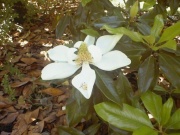Difference between revisions of "Dicotyledon"
Jump to navigation
Jump to search
m (Text replace - "== Authority ==" to "== Sources Checked for Data in Record ==") |
|||
| Line 8: | Line 8: | ||
dicotylédon (Fr.); dicotiledónea (Esp., Port.); dicotiledone (It.) | dicotylédon (Fr.); dicotiledónea (Esp., Port.); dicotiledone (It.) | ||
| − | == | + | ==Resources and Citations== |
* Mary-Lou Florian, Dale Paul Kronkright, Ruth E. Norton, ''The Conservation of Artifacts Made from Plant Materials'', The Getty Conservation Institute, Los Angeles, 1990 | * Mary-Lou Florian, Dale Paul Kronkright, Ruth E. Norton, ''The Conservation of Artifacts Made from Plant Materials'', The Getty Conservation Institute, Los Angeles, 1990 | ||
| − | * Wikipedia | + | * Wikipedia: http://en.wikipedia.org/wiki/Dicotyledon (accessed Dec. 15, 2004) |
[[Category:Materials database]] | [[Category:Materials database]] | ||
Latest revision as of 10:08, 21 July 2022
Description
A large class of flowering plants and trees whose seeds have two cotyledons or leaves. Examples of this type of plant are: Cotton, Flax, Hemp, rubber tree. and most hardwood trees.
Synonyms and Related Terms
dicotylédon (Fr.); dicotiledónea (Esp., Port.); dicotiledone (It.)
Resources and Citations
- Mary-Lou Florian, Dale Paul Kronkright, Ruth E. Norton, The Conservation of Artifacts Made from Plant Materials, The Getty Conservation Institute, Los Angeles, 1990
- Wikipedia: http://en.wikipedia.org/wiki/Dicotyledon (accessed Dec. 15, 2004)
